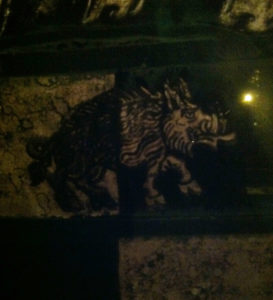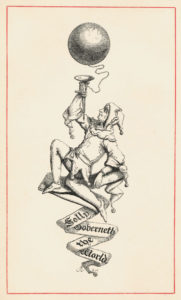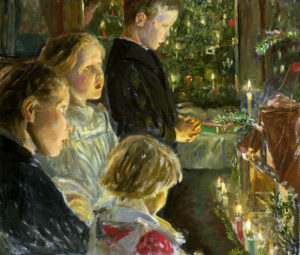FIFTH DAY of CHRISTMAS:
Bring in the Boar
On this Fifth Day of Christmas, tradition for an old English Christmas would have us focus on feasting. In particular, we would “bring in the boar.” We tend to remind you here at the Convivio Book of Days blog each Fifth Day of Christmas about the Boar’s Head Carol… mainly because our Convivio Bookworks name comes from that same carol. It is an ancient carol that comes out of Queen’s College, Oxford. As the story goes, a young student of the university many centuries ago was out in the surrounding woods when he was charged by a wild boar. The student saved himself with the only weapon he had upon him: a dusty old volume of Aristotle, which he shoved down the throat of the charging beast and which did the beast in. He then brought the boar’s head back to the college and had it for dinner… with the fanfare of this carol:
The Boar’s head in hand bear I
Bedecked with bays and rosemary
And I pray you, my masters, be merry
Quot estis in convivio! [So many as are at the feast!]
The Boar’s head, as I understand,
Is the rarest dish in all the land
When thus bedecked with a gay garland
Let us servire cantico! [Serve with a song!]
Caput apri defero,
Reddens laudes Domino! [The Boar’s head I bring, giving praises to God!]
Our steward hath provided this
In honor of the King of bliss,
Which on this day to be served is.
In Reginensi atrio! [In the Queen’s Hall!]
Caput apri defero,
Reddens laudes Domino!
We have never served a boar’s head and don’t ever plan on doing so, but we have served other feasts during Christmases past. It is appropriate, I think, to sing the boar’s head song while serving up any great feast… you might just change the words a bit. (“The crown roast in hand bear I,” for instance, works really well.)
Aside from the Queen’s College story and our old Boar’s Head Carol, there are other associations between the boar and these darkest nights of midwinter. Pigs were especially sacred to the Celts, for they provided the winter’s meat and the belief was that pigs were a gift from the underworld. And in the Scandinavian countries, Frey, the sun god, rode across the sky on a boar with golden bristles that shone like rays of the sun.
There is, as well, a fun old carol that is sung by the Revels children’s chorus. It’s all about animals, but it begins with a pig. Seth and I were singing it just last night, in fact. I don’t even know why. Perhaps it is just the persistence of memory and the timely reminder that the focus for this next day of Christmas would be on the boar.
There was a pig went out to dig
Chris-i-mas Day, Chris-i-mas Day,
There was a pig went out to dig
On Chris-i-mas Day in the morning.
There was a cow, went out to plow,
Chris-i-mas Day, Chris-i-mas Day,
There was a cow went out to plow
On Chris-i-mas Day in the morning.
There was a sparrow, went out to harrow,
Chris-i-mas Day, Chris-i-mas Day,
There was a sparrow, went out to harrow
On Chris-i-mas Day in the morning.
And so on it goes with crows and sheep and drakes and minnows. But it is the pig this Fifth Day of Christmas that steals the show. Whatever your feast may be this day, I pray you, my masters, be merry, quot estis in convivio!
Image: Seth discovered this image of a wild boar depicted in one of the stained glass windows at Bethesda by the Sea Episcopal Church on Palm Beach. We don’t go there very often, but we do make it one of our stops on our annual Maundy Thursday pilgrimage to three churches. Each year we visit this boar, like an old bristly friend.


